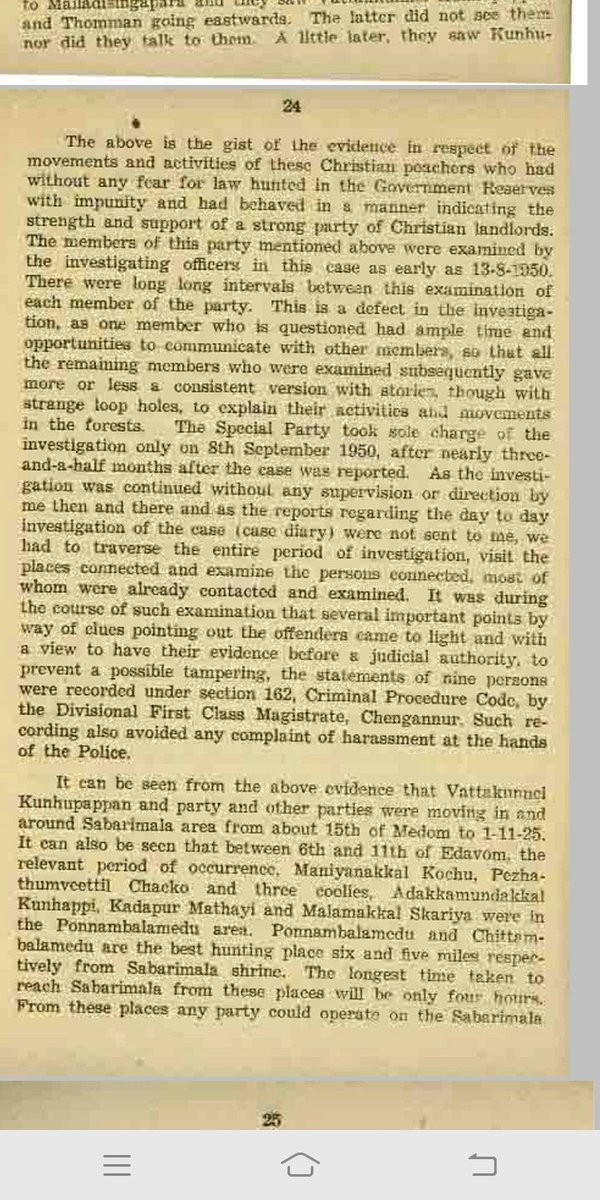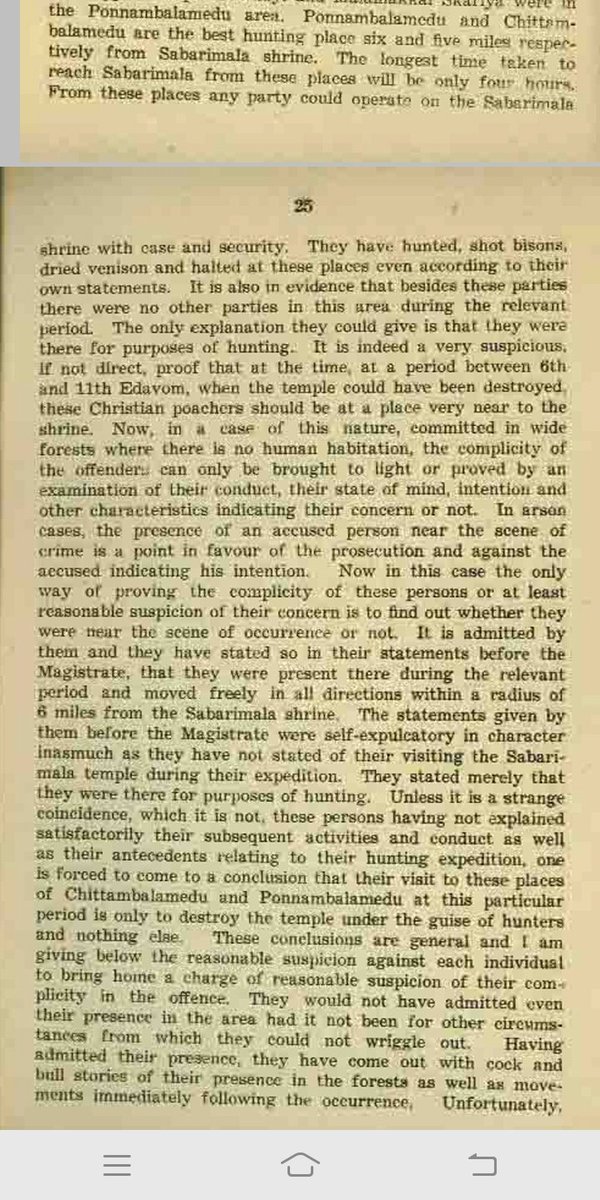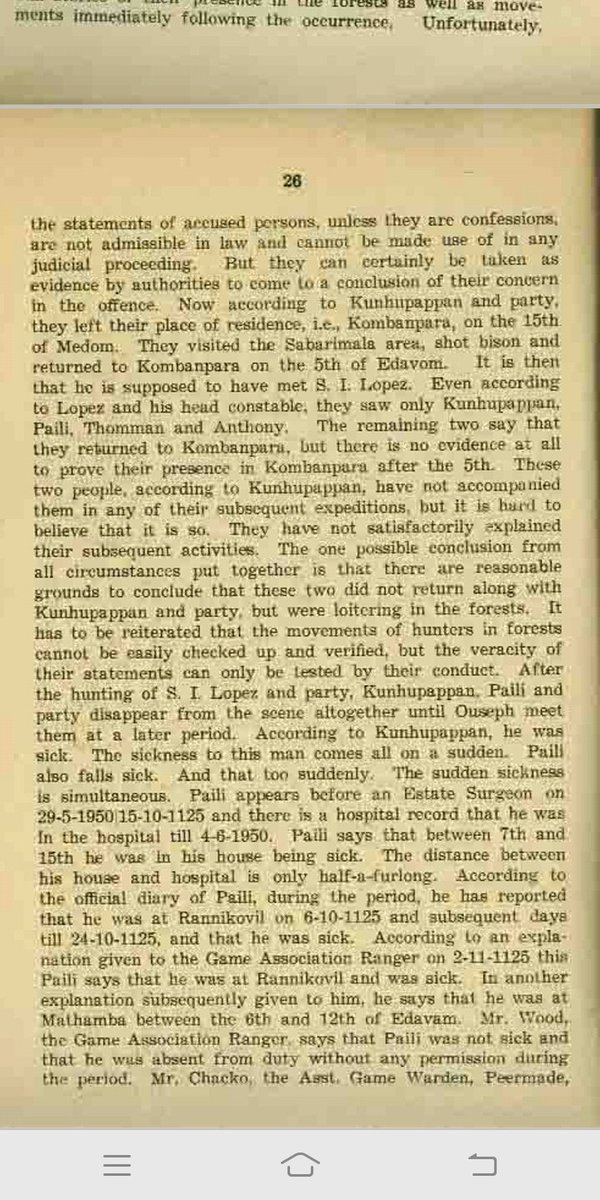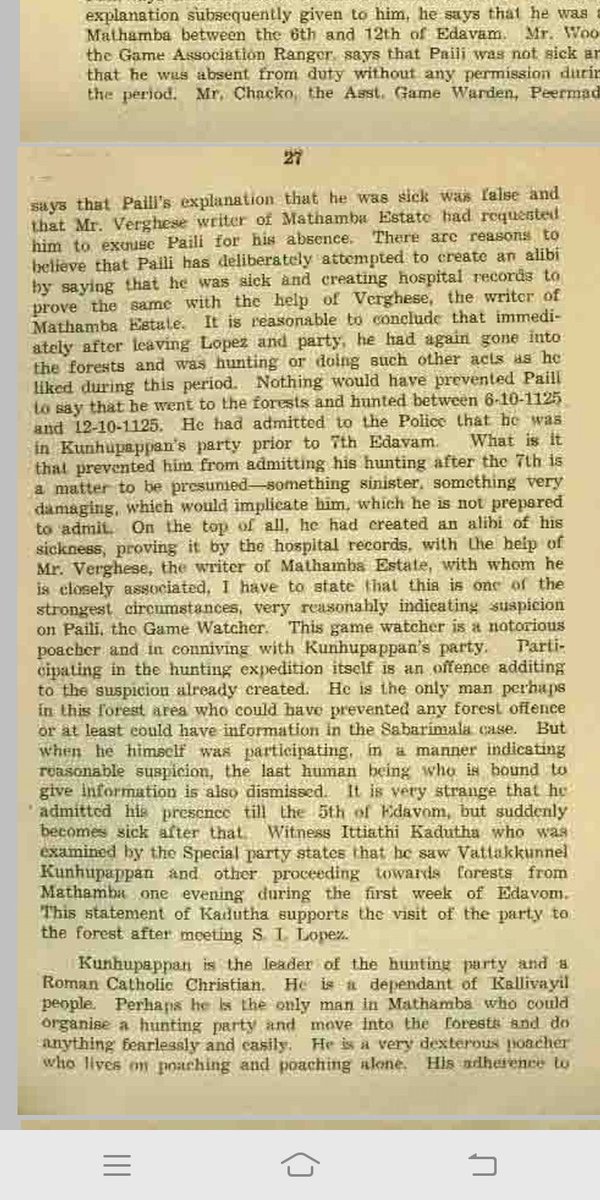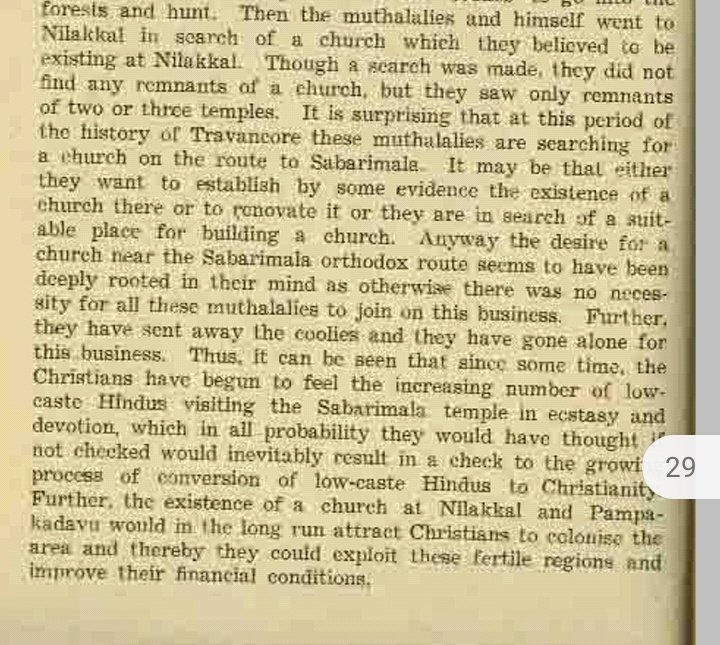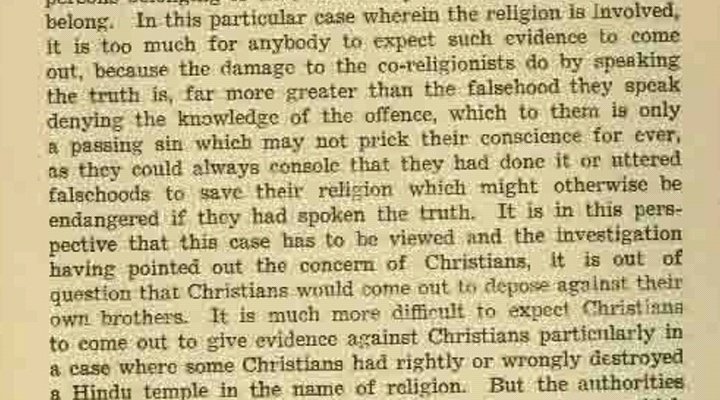This is perhaps the most significant piece written on the whole Sabarimala episode that followed the ignorant SC order and the pathetic determination of the drab commie government & other background forces to send its demented workers to #Sabarimala temple in the name of women's equality. Their effort is of course to use every opportunity and occassion to condemn Hinduism, as their very existence in India depends on Indians not knowing or exploring their glorious scientific past.
The Science that is now celebrated is at best material science that helps in commercial profit and physical comfort. Not that it is bad to pursue this direction, only the severe limitation of it needs to be pondered, considering that all science as is known now is also happening through a physical experience and yet very little is known about what actually happens within our own bodies.
Yes, we know the heart pumps and blood circulates and all the physical processes of how something works but very little is known beyond-how every thought and every situation around you is recorded in every cell enough to influence you in multiple ways through many lifetimes.
Only a person who has experienced energy spaces can fully understand this write up but it is hoped that an artice such as this will also inspire atleast some towards higher consciousness.
Please read the below extract and the links within to the original site
Sabarimala Verdict – Fabricated Rights Over Real Experiences Of Women


Vyjayanthi and me at the Bhagavathi temple, Chengannur
“Experience is the only source of knowledge. Experience is the only teacher we have. We may talk and reason all our lives, but we shall not understand a word of truth, until we experience it ourselves.” – Swami Vivekananda
Every argument on the Sabarimala temple and its restriction on women in the menstruating age has been heard. Except one.
The actual physical experience of women whose menstrual cycles have been impacted by consecrated temples, has not yet been heard. When we see hundreds of women devotees protesting against the entry of women in Sabarimala, we assume that they are speaking out of just faith. What if it is more? What if they are speaking from an experience of what such spaces can do to women’s health?
It is easy to attempt reason in terms of the law and equality and patriarchy; everyone who has a mind has an opinion. So we will not go there in this write-up. Instead, this write-up will take up the difficult part of sharing some very personal experiences of how menstrual cycles have been impacted by temples. And then we will explore the aspect of explaining these practices through a scientific lens.
Why women’s experiences need to be taken more seriously?
I have been a Menstrual Educator for close to 9 years now, and have spoken to thousands of rural girls and women across India on the subject. Every time I did a session for girls or women, invariably there were questions about menstrual practices. My Catholic upbringing kept me cut off from cultural menstrual practices for a long time. So in my initial years, I would out rightly tell women and girls who enquired about it, that it was just superstition. But their questions always bothered me – why would so many girls and women across the country willingly follow these practices?
It took me a few years to realize that the practices they follow are not just faith based or out of fear. For many of them, either they or another women they know have experienced the consequences of breaking the menstrual taboos, and it wasn’t pleasant. So when they say “we do not eat Papaya or Fish or Egg during menstruation”, it is because someone broke the rule and experienced the heavy bleeding and excessive heat (Pitta) due to consuming such food during menstruation. And when they say “we do not visit a temple during menstruation”, some rebel among them or their ancestors have had the experience of menstrual disorders owing to breaking this practice. And the knowledge from the experience was passed down from generation to generation. Rural women do not open up easily about such things and it requires a lot of un-conditioning of our mind to respect their experiences and learn from it.
How the Chengannur Bhagavathy temple shifted my menstrual cycle
But, we cannot fully comprehend such things through others’ experiences alone. My own direct experience of how temples can shift menstrual cycles happened when as part of my study on this subject, I visited the Chengannur Bhagavathi Temple in Kerala in 2014. Vyjayanthi and I in conversation with Smt. Devika Devi and her husband at Chengannur to understand the practices at the Bhagavathy temple.
Vyjayanthi and I in conversation with Smt. Devika Devi and her husband at Chengannur to understand the practices at the Bhagavathy temple.
 Vyjayanthi and I in conversation with Smt. Devika Devi and her husband at Chengannur to understand the practices at the Bhagavathy temple.
Vyjayanthi and I in conversation with Smt. Devika Devi and her husband at Chengannur to understand the practices at the Bhagavathy temple.
The female deity in this temple is famous as she is believed to menstruate. Her menstruation is celebrated in a big way and considered very auspicious. Out of curiosity, I asked one of women devotees, what brought her to the temple. She was a sweet, elderly lady dressed in the classic white Kerala saree. She held my hand and asked me “Do you have children?” When I said no, she said “Don’t worry, Amma will solve your problem, just as she has done for so many women.” The priest later explained that several women who suffer from infertility or menstrual disorders have been cured after coming to this temple. The belief is so strong because of the direct experiences that women have had with this space.
After my return from this temple, there was an unusual shift in my menstrual cycle. It shifted by 13 days, which never happens to me otherwise. The shift made my period coincide with Amavasya or the New Moon day, and the resulting period was a lot calmer than usual.
The significance of this shift wasn’t clear to me at first. But it turns out that women whose cycle coincides with Amavasya (New Moon) have an easier period and better reproductive health. This was verified during a study of menstrual health that my team and I undertook in 2015. We actually got to see this phenomenon in an interior village called Marahalli in Uttara Kannada District of Karnataka. A collage of our work in pre-screening 1058 women across rural Karnataka for Anemia and Menstrual Disorders
A collage of our work in pre-screening 1058 women across rural Karnataka for Anemia and Menstrual Disorders
 A collage of our work in pre-screening 1058 women across rural Karnataka for Anemia and Menstrual Disorders
A collage of our work in pre-screening 1058 women across rural Karnataka for Anemia and Menstrual Disorders
This village was situated in the lap of nature and far from typical human civilization. There were only about twenty families and the houses were scattered among the hillock, surrounded by dense forest-like vegetation. The interviews were conducted separately in each women’s house, so they could not have influenced each other’s answers. When we asked them if they remembered the date of their last period, all the women said “Amavasya”. The women here mark the date of their period through the moon cycle. We also noted that these women had better menstrual health (absence of anemia & menstrual disorders) compared to the other women we interviewed. These findings point to a very interesting thought that if our lives were in sync with nature, the way we menstruate too would be in sync with nature.
Spaces like the Bhagavathy temple in Chengannur are capable of shifting women’s cycles to align it with nature’s cycles and thereby fixing the menstrual and reproductive health of women who entered that space.
How my menstrual cycle was altered by Ayyappa devotees
I visited the same temple a year later, and again my menstrual cycle altered, but very differently. My second visit coincided with the Sabarimala season. The Chengannur Bhagavathy temple also lies on the bank of the river Pampa, and it is one of the stops for the Ayyappa devotees on the way to Sabarimala. On that day, hundreds of Ayyappa devotes swarmed the temple. They were everywhere and made it impossible to even go near the shrine. We had to content ourselves from a distance and left after taking a few interviews of the priest and the Thanthri’s mother which we had come for. The very next day after my return, I got my period, one week before the expected date. This was very unusual and it threw my cycle totally out of sync.
It is possible that the Ayyappa devotes presence impacted my cycle. It is perhaps for good reason that Ayyappa devotes are asked to stay away from women, and vice versa. If the presence of the devotees alone can have such an impact on menstrual cycles, imagine what Sabarimala itself can do to women in the reproductive age.
Another interesting experience I had was during a visit to the famous Kamakhya temple in Assam, where the Ambubachi festival is a grand celebration of Devi’s menstruation. After this visit, my cycle again shifted. But this time, it coincided with Purnima (full moon). It left me a bit confused because I was expecting something else after the experience in Chengannur. But the interesting part is that for two years following that visit, my period was exactly on the same day as the beginning of the Ambubachi festival, which was a full moon day. I later realized that menstruating with the full moon is significant in its own way. Women who are pursuing a spiritual path or are done with the reproductive phase would tend to menstruate on Purnima. And the Kamakhya temple was for such women.
Two temples, seemingly similar, and yet had such a different impact on my menstrual cycle. With these experiences, one thing was certain – temples do have an impact on our cycles.
The more subtle we make ourselves, the more perceptive we will be to such experiences.
The reason why certain religious practices require people to follow a Satvic diet and yogic practices is to help us experience the subtle. For others, it might take longer. But the impact is undeniable.
Other women’s experiences
If temples have such a positive impact on our menstrual cycle, then the question that comes to mind would be “Why the restriction on menstruating women from entering temples?”
One of the biggest mistakes of our times is to equate menstruation to everyday processes and propagating the thought that using a Sanitary Pad would make a menstrual day the same as any other day. Our understanding of menstruation could not be shallower.
Over the years, several women have written to me and shared their personal experiences of what happened when they broke menstrual restrictions. Here is what two women shared. The names of the women are kept anonymous to protect their identity.
Women A
FEB 2015
I wanted to share an experience I had some years ago. There were half a dozen of my friends at a meditation teacher’s house for satsang and puja. The husband and wife explained that for those of us menstruating, we would be more comfortable sitting at the back of the room. They then offered us some more explanation, “the energy during menstruation goes downwards into the earth, (at the puja table, offerings, altar), the energy is going upwards. This can bring discomfort in the body”.
Well I was overtaken by the end of the chanting to pay my respects and bow down to the puja table. I didn’t take a flower as offered by the teacher, as I thought that was part of what I shouldn’t be doing. I deeply wanted to offer myself instead. Then I moved back to my spot on the floor, and within a few minutes experienced sensations like I never had before or since in my head and body, like I was being pulled or twisted from both above and below! My good friend was supportive and told me it would end soon. And it did, I felt okay again after 5 minutes.
I am pleased to have had this experience and to be able to share it. Particularly when people criticise mosques with separate areas for women praying. I can tell my story and say that it is a purely practical and ancient approach.
I have come to find ways to honour Earth and Soil and Dream and Myth and Body and Movement and Wildness during menstruation now.
While this woman was able to immediately experience the effects of being in a consecrated space while menstruating, it is not so obvious for others. In fact, for most women it takes years for the accumulated impact of breaking menstrual restrictions to manifest itself physically. And they generally do not notice it until something big happens. And when it does, it can be painful and difficult to heal, as shared by the woman in the paragraph below.
Woman B
SEP 2018
I grew up with a negative attitude towards menstruation. More than the physical discomfort what hurt me was the isolation from puja on grounds of impurity. As I understood this was unfair as women were paying a price for a natural occurrence over which they had no control. I had no problem with God. My problem was with a practice for which no satisfactory explanation was given. I could have turned atheist like many women and girls I knew, to protest against the concept of menstrual impurity. But as I said, as a teenager I understood that rituals were socially designed and that they were purposely designed to disempower women. As I result I decided to not follow the practice.
I began to perform all rituals like lighting lamps, reading the scriptures and visiting temples irrespective of my menstrual calendar. It made me feel powerful. It went on like this till I got menopausal. I suffered from extremely heavy bleeding and weakness for almost 6 years. I tried all modes of treatment including allopathy homeopathy Ayurveda but with no relief.
Then I came across a series of literature and interacted with a few people whose intellect and integrity I respect, who advised me against participating in rituals while menstruating. I joined some healing groups where I was exposed to the understanding of physical ailments being manifestations of mental patterns. Around that time I lost my mother too. I felt my menopausal issues were somehow linked with my anger at my mother. As I went deeper I learnt to view her differently. She couldn’t answer my questions as she didn’t have any answers. I understood that though she gave up on me, she continued her own practice as she didn’t view the issue of menstruation as a disability like I did. During this time I gave up on doing my regular pooja while in periods. My problem slowly abated. I cannot say I have understood the impact of certain energies on women’s bodies but I have understood that there’s a lot I do not know enough about. I have understood that there is a wisdom in the ancient practices that is not generally understood.
How do we scientifically understand such experiences?
To even begin to comprehend such experiences, let alone explain it scientifically, we will need to learn the principles of the science behind such practices. It has taken me years of studying various subjects to understand and decode my own menstrual experiences and that of other women, and I am still learning. No, there is no short cut, and “opinions” however eloquent do not address the issue. What would be wonderful is if more women made an effort to study deeper the things they are unable to explain. For those who are willing to invest their time to study such practices, there are two ways of going about it.
One, by understanding the principles of Ayurveda, we will begin to understand how the body functions at the sub-atomic level. The understanding of how ancient temples were constructed through the science of Agama Shastra will further help us understand how such spaces interacted with the bodily forces. What I learnt from my study of these subjects is summarized in the below write-ups:
I have written about the Sabarimala temple and how it would impact women’s cycles in this write-up – Sabarimala Story: Can visiting temples affect menstruating women?
If you wish to understand menstrual practices through the lens of Ayurveda, then you can refer this write-up – The Super Science Behind Menstrual Practices.
In spite of indigenous sciences having a wealth of knowledge on these subjects, there are many who are not comfortable with it. So for those who prefer to explore these subjects through the lens of modern science, you have a tall task ahead. Here is why.
While Modern Physicists have delved deeper into the science that happens at the sub-atomic levels and accepted theories of Quantum Science, the same is yet to happen with Biologists. Unlike Quantum Physics which is well accepted and researched, the branch of Quantum Biology is only just emerging over the last decade. At this point, those talking about Quantum Biology are largely Quantum Physicists. Unless Biologists start venturing out of their comfort zone of atoms and molecules, Quantum Biology will not go very far in explaining the sub-atomic activists within the human body. The obvious question that should arise in the minds of modern medicine practitioners who scoff at Ayurveda is – “If sub-atomic forces exist outside the human body as quantum physics states, how can it not exist within the human body which is also made up of atoms and molecules?” For those interested to pursue this line of scientific understanding, the following talks might be a good start
Professor John Hagelin’s talk on Consciousness and The Unified Field Theory draws parallels with the Super String Theory of Quantum Physics and The Prakritis as espoused in Ayurveda.
Jim Al-Khalili’s TED Talk on Quantum Biology: How Quantum Biology Might Explain Life’s Biggest Questions
If Quantum Biology evolved and if Modern Medicine practitioners learnt to apply it in the diagnosis and treatment of disease, it will be a genuine breakthrough for modern medicine. And whether they admit it or not, it will basically be a lot like Ayurveda.
It is interesting that someone like Albert Einstein said that “Science without Religion is lame; and Religion without Science is blind.” He started with science and ended in religion. Perhaps he knew more than what he liked to admit. Indeed, his “Theory of Entanglement” beautifully explains some of the most hard-to-crack menstrual practices (I will save that for another blog).
- Menstrual cycles are extremely delicate and only a close observation of the changes will help us understand the science behind it deeper.
- Menstrual cycles and the impact that temples have on it can be a great tool to physically experience what quantum scientists are struggling to theorize.
- But more importantly, ignoring this and breaking the age old menstrual restrictions could result in an unprecedented rise in menstrual disorders for Indian women in the coming years, given that we are surrounded by consecrated spaces and are quite clueless about its impact on menstruating women.
- The rhetoric of women being impure will have to give way to a scientific understanding of such phenomena.
Every cloud has a silver lining. As disturbing as it may seem today, may the protests and arguments on Sabarimala result in a deeper understanding of religious spaces and its impact on women’s cycles.












